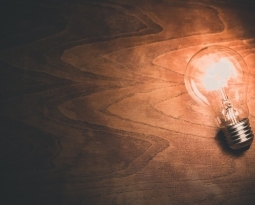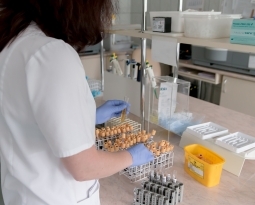The Longevity of Batteries: From lithium-ion to lithium-sulfur, latter signals new age in battery life
It’s 2018, and when your phone battery dies, it feels like you die along with it–at least temporarily. Not being able to check social media, keep up with work emails, or access a map with directions to the latest craft beer taps seems (almost) anxiety inducing; for me it does, anyway. By way of the brilliant minds at The University of Texas at Dallas, the post-mortem phone blues may occur less frequently, thanks to their research and development efforts to create an efficient lithium-sulfur battery.
According to Dr. Kyeongjae “K.J.” Cho, a professor with research interests in renewable energy at UT Dallas, lithium-sulfur batteries “are less expensive to make, weigh less, store almost twice the energy of lithium-ion batteries and are better for the environment.”
“A lithium-sulfur battery is what most of the research community thinks is the next generation of battery,” Cho said. “It has a capacity of about three to five times higher than lithium-ion batteries, meaning if you are used to a phone lasting for three hours, you can use it for nine to 15 hours with a lithium-sulfur battery.”
To make the lithium-sulfur battery more efficient than a traditional lithium-ion battery, Cho and other researchers discovered that molybdenum, a metal that easily forms compounds with other elements, improved stability and compensated for the poor conductivity of sulfur, which makes lithium-sulfur batteries more practical. There are downfalls, however.
In an article for Nature Nanotechnology, the researchers explain, “Despite many advantages, Li–S batteries are plagued with practical issues that limit their applications: (1) the poor electronic conductivity of sulfur that retards electron transfer during the charge/ discharge processes; (2) the formation of intermediate polysulfides generated during cycling, which leads to the shuttle effect and increases the impedance of both electrodes; (3) the intrinsic issues of Li-metal anodes, which are often associated with uncontrollable dendrite formation during repeated Li deposition and dissolution processes; and (4) the formation of an unstable solid electrolyte interphase (SEI) layer between the electrolyte and Li metal due to inhomogeneous deposition of Li. These issues lead to the reduction of Coulombic efficiency and the subsequent fast termination of battery life.”
Despite the downfalls, it’s arguably a matter of time before R&D initiatives, such as the one above, brings forth a commercially available lithium-sulfur battery.
Are you developing a rechargeable energy solution? Did you know your R&D experiments could be eligible for the R&D Tax Credit and you can receive up to 14% back on your expenses? To find out more, please contact a Swanson Reed R&D Specialist today or check out our free online eligibility test.
Who We Are:
Swanson Reed is Texas’ largest Specialist R&D tax advisory firm, offering tax credibility assessments, claim preparation, and advisory services. We manage all facets of the R&D tax credit program in Texas, from claim prep & audit compliance to claim disputes.
Swanson Reed regularly hosts free webinars and provides free IRS CE and CPE credits for CPA’s. For more information please visit us at www.swansonreed.com/webinars or contact your usual Swanson Reed representative.

















